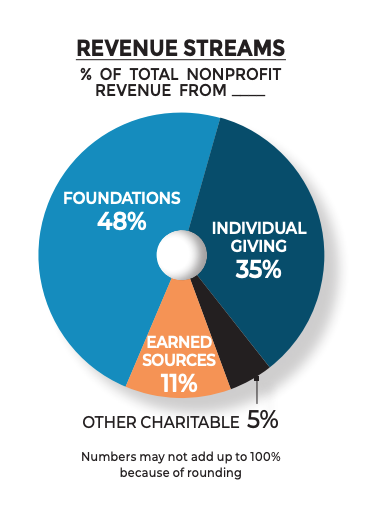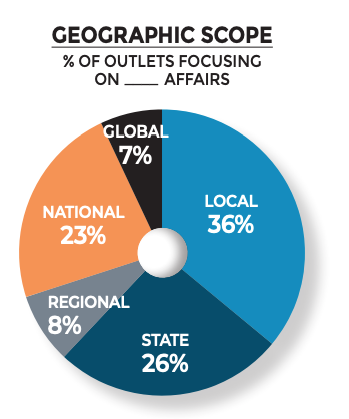
In 2020, the INN Index found that the nonprofit news field entered the COVID-19 crisis with steady finances, growing ranks and an evolving relationship with its audience that may strengthen public engagement even in times of crisis.
The INN Index 2020 is based on 2019 data from 54% of the INN membership. It is too soon to assess the impact of the COVID-19 crisis on the nonprofit news field. As of June 2020, the ground is still shifting. But it is possible to assess strengths and challenges of nonprofit news as the pandemic and its economic impacts began to unfold. New data from the INN Index 2020, the third annual survey of North American nonprofit news organizations, offers a snapshot of the field at the close of 2019.

Nonprofit news organizations continued to broaden their financial base and lessen their dependence on foundation grants, though philanthropic funding of all sorts remains the mainstay of their public service reporting. For the first time since INN Index launched three years ago, a majority of nonprofit news outlets reported that foundation funding made up less than half of their total annual revenue. Nonprofits are continuing to diversify their revenue sources, particularly by tapping into individual giving.
In 2019 we also saw a significant shift among publishers toward focusing on direct audiences, a trend that affects business models for news as well as the relationships between the press and the public it serves.
The public generally receives nonprofit news in two ways: directly from nonprofit newsrooms via their websites, newsletters, podcasts, and events; and indirectly from all sorts of publications and broadcasts that republish or carry nonprofit news reporting. Both ways serve the journalistic mission. Many of these nonprofits share their original reporting with dozens and sometimes hundreds of other outlets, from public media broadcasts to newspapers to online aggregation platforms. Operating as a news service helps these relatively small newsrooms extend their mission, reach and impact, but can make it more challenging to develop revenue and a direct relationship with consumers and supporters.
In 2019, the INN Index showed the clearest shift yet to publishers focusing on building a direct following. More publishers than ever reported that they primarily engage their audience directly, and fewer reported that third-party publication was the primary way they reached readers and viewers. The vast majority of news organizations, including some that primarily engage their audience directly, reach at least some of their audience via partner publications. But those outlets can still be increasingly focused on building direct audiences at the same time, such as by using distribution as a marketing tool to lead consumers to their own websites and newsletters.

Notably, the data also shows that local publications make up a growing share of the nonprofit news field. As financial woes force severe cutbacks and closures of traditional local newspapers, more local nonprofit news media are being launched. Index findings increasingly reflect this broadening of the nonprofit news field. The nonprofit news movement began in 2009 dominated by national and investigative news outlets, which have flourished and grown over the years. As more community journalists launch nonprofits, they start with lean budgets, small staff numbers, and often a scrappy startup mentality, focused on direct engagement with audiences and members.
This report presents data collected from the INN nonprofit news network. The field continued to grow through 2019, reaching an estimated $500 million in annual revenue, and staffed by roughly 3,500 people including some 2,300 journalists.
If you have questions about the INN Index, please contact news@inn.org.
You may also be interested in this article based on 2020 Index data from Knight Foundation.
Back to top